





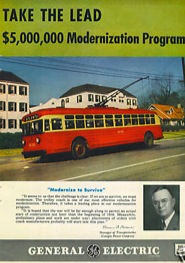
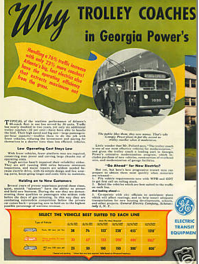
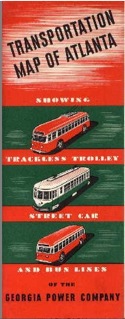
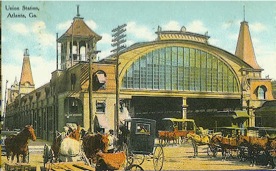




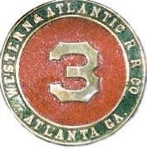

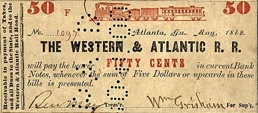
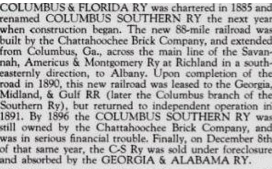
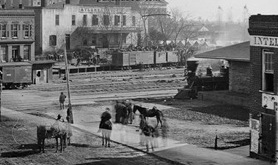
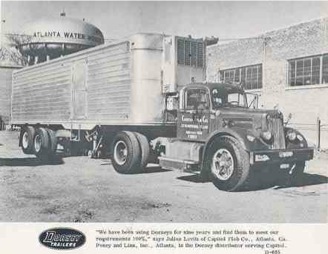
By the end of 1842 work on the Western and Atlantic Railroad had begun in a big way. The state contracted enough iron to lay 33 miles of track. Lumpkin wanted to have a run completed between Atlanta and Marietta before 1843 and he got his wish. Transporting the Florida over the Old Covington Road, it arrived in Marthasville in time to be ready on December 25, 1842 to make the maiden voyage on the track. Unsure of the modern technology the passengers insisted that Engineer W. F. Adair stop the train at Boltonville, let them off and permit them to walk across the trestle rather than ride. An 8 year-old girl named Rebecca Latimer (later Rebecca Latimer Felton) disembarked and walked across the trestle with her father.
The Georgia Railroad operated a very modest passenger service between Atlanta and Augusta, Ga. A FP-7/GP-7 Power combination removed from train number one for servicing is pictured at Atlanta's Union Station. 1970s.
Advertisement from 1944
-----------------------------------
Jan, 17, 1914
The New York Times
Bandit Robs Passengers
Georgia Train Robber Escapes After
Pistol Duel with Deputy
Atlanta, Ga. Jan. 16, 1914 - A bandit boarded a Western & Atlantic train at Vinings Ga., to-night, robbed the passengers in one of the coaches, and after engaging in a pistol duel with a Deputy Sheriff on board, jumped from the train at Bolton, Ga.
The bandit entered the chair car, drew a pistol, and began to collect valuables from the passengers. He had robbed more than a score when C.C. Heard, an Atlanta deputy, who was returning from Rome, Ga. opened fire upon him. Half a dozen shots were exchanged. Heard being wounded slightly by a bullet which passed through his cheek. Whether the bandit was hurt is not known.
The robber did not enter the express or mail cars. The amount stolen from passengers is believed to have been small, although one man reported that he had given up $300.
Passengers and trainmen said the robber wore a mask, and were uncertain whether they could identify him.
The authorities at Bolton, which is seven miles west of Atlanta, have taken into custody a man said to answer the description of the bandit.
The train runs from Chattanooga to Atlanta, and most of the passengers are residents of Chattanooga and intermediate towns. The Western & Atlantic Railroad is part of the Chattanooga & St. Louis system.
Fulton County Railway -- A 55-mile system serving the Fulton County Industrial Park, a major industrial and warehousing area along the Chattahoochee River on the west side of Atlanta. The railroad was originally built in 1956 by Atlantic Coast Line as its Fulco Branch. It is owned by OmniTRAX
Terminus is a name which was adopted after civil engineer Stephen H. Long (1784-1864) designated this site for the hub or terminal point of the Ga. Railroad. Long is the explorer for whom Long’s Peak in Colorado was named. This railroad center has also been called Thrasherville and Marthasville.

Terminal Station & Plaza



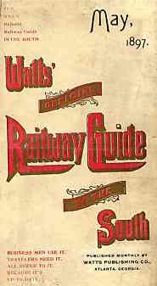
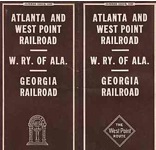
Summer 1939
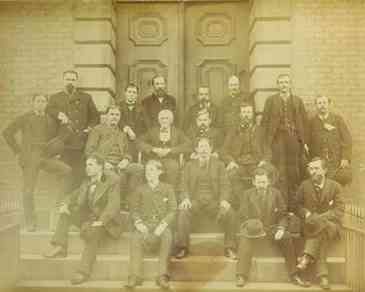

Agent and Employees of the Georgia R.R. Co.
Atlanta Ga. March 1st, 1883
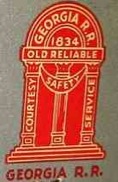

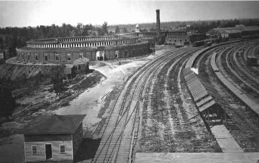
Atlanta Roundhouse 1864

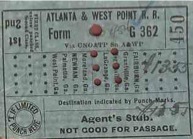 Atlanta & West Point R.R. ticket 1906
Atlanta & West Point R.R. ticket 1906
Bus
Token

Atlanta Transit
Company
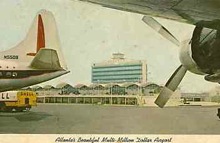
Atlanta’s Beautiful Multi Million Dollar Airport
From the east, the Georgia Railroad service between Augusta and Greensboro started in 1839. Late that year, (Nov. 17) the Western and Atlantic route had been prepared for timbers to be laid from Terminus to the Etowah and beyond. By this date, however, there was already grumbling coming from some in Milledgeville about how much time it was taking Long to build the railroad. The Cherokee were now gone, having been forced west on The Trail of Tears and politicians became anxious to complete the task of connecting the Chattahoochee and Tennessee Rivers. Less that a year later Chief Engineer Long, now a major in the U. S. Topographic Corp quit.
Less than 20 miles of track, including the bridge at Bolton over the Chattahoochee had actually been laid, although a significant amount of land had been graded. Even the depot at Marietta, site of Long's office, did not have track. Graded for railroad track, the bare earth was used for three years as a racetrack. Over the next year little was done on any aspect of the Western and Atlantic. Then, on December 4, 1841, the state suspended all work north of the Etowah. The suspension didn't really matter since nobody was working on the railroad anyway. With the suspension the state also dissolved the Board of Commissioners.
On January 1, 1842, former U. S. Senator and Georgia governor Wilson Lumpkin, retired from public service, reluctantly took over as disbursing agent for the railroad. He began pushing to resume work and found Charles Fenton Mercer Garnett, whom he put into Stephen Long's old position of Chief Engineer. Garnett's first act was to establish his office in Whitehall, near the southern terminus of the railroad. One of Garnett's later acts was to propose the name Marthasville in honor of Lumpkin's daughter, Martha Atalanta Lumpkin.
As rail lines from the east (Georgia Railroad) and south (Monroe Railroad, later the Macon and Western, and the Central of Georgia) approached in 1842 interest in the location of the terminus grew. Suddenly, it seemed as if everybody wanted a piece of the economic pie. Proposals were being made to reroute the southern terminus of the Western and Atlantic Railroad as far south as Henry County, but Lumpkin accepted a donation of the northeast corner of land lot 77 (roughly 5 acres) from Samuel Mitchell as the final location of the terminus. This corresponds to the present-day downtown area between Pryor Street and Central Avenue north of Alabama Street, where the old Union Station stood. It was a wise move by Mitchell. The land around his donation rapidly increased in value. The original terminus became a roundhouse, which was consumed by fire in 1906.
Civil War Soldiers on Boxcars
at Railroad Depot Atlanta Ga

